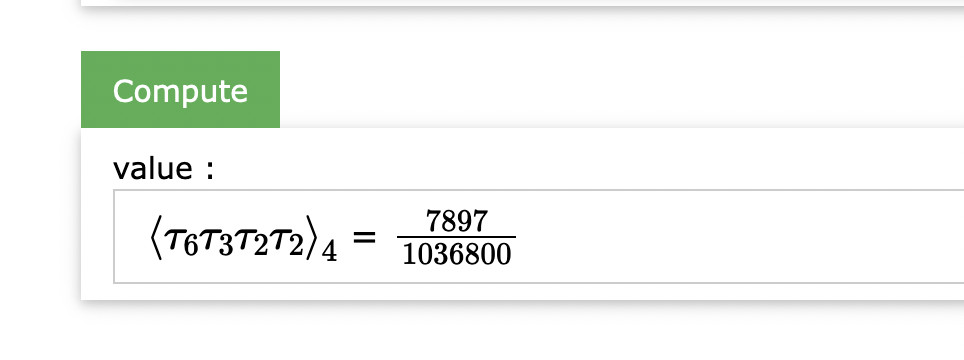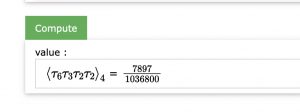
The “Witten-Kontsevich intersection numbers” are scattering amplitudes in the context of the most simplified possible model of quantum gravity and string theory: a very low-energy quantum gravity, simplified to the extreme to keep only the fundamental phenomenon of topology fluctuations.
These are positive integer or rational numbers, and they are the basis of all the more complex string theories, and of all surface enumerative geometry, in particular in algebraic geometry. Moreover, the conjecture of E. Witten, whose proof gave the Fields Medal to M. Kontsevich, indicates that these same numbers are relevant in almost all problems of mathematical physics: random matrices, statistical physics on a random surface, wave propagation in a canal, or the semi-classical approximation of the solutions of Schrödinger equations, and of all field theories in quantum physics. In particular, they play an important role in the black-hole model developed by Jackiw-Teitelboim.
But the question is: how to calculate these numbers? Do we have efficient formulas, efficient algorithms? Can we tabulate them? And how can they be approximated in the so-called “large topology limit”, in which the number of “holes” in a surface (more precisely the Euler characteristic) tends to infinity?
These questions are addressed by Bertrand Eynard, researcher at the Institut de Physique Théorique (IPhT), and his young collaborators: P. Gregori, A. Giacchetto, D. Mitsios, from IPhT, as well as E. Garcia-Failde (Sorbonne University and Université Paris Cité, CNRS) and D. Lewański (University of Trieste).
Recent results of this group include new formulas for computing intersection numbers, as well as the estimation of their algorithmic complexity degree (number of elementary operations to perform each evaluation of the formula). It turns out that, fixing the number of boundaries of a surface, the algorithmic complexity follows a power law in terms of the Euler characteristic (Bertrand Eynard, Dimitrios Mitsios: A new formula for intersection numbers, arxiv.2212.04256 ).
The team has also worked actively to create an international community, by organizing working groups and conferences (Les Diablerets February 27-March 3, 2023 and March 13-18, 2023), in order to concretely implement the algorithm for calculating these numbers in the free software SageMath. SageMath codes are freely available in the GitLab admcycles repository and spreadsheets are also available on the COCALC cloud. A web interface to calculate intersection numbers is currently available (see figure). We can say that a huge service to the physics and mathematics community has been rendered!


